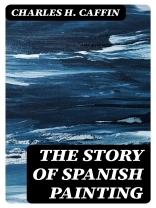In ‘The Story of Spanish Painting, ‘ Charles H. Caffin delivers a thorough and engaging exploration of Spanish art, tracing its evolution from the medieval period through the modern era. Caffin’s prose is marked by clarity and enthusiasm, using vivid descriptions and a chronological structure that allows readers to grasp the cultural and historical contexts influencing key masterpieces and artists. He skillfully interweaves aesthetic analysis with biographical insights, providing a rich landscape of the social, political, and religious factors that shaped Spain’s artistic legacy, including influential figures like Velázquez, Goya, and Picasso. Caffin, a noted American art critic and historian, possessed a profound understanding of European art movements, informed by his studies in both England and America. His appreciation for visual art, coupled with his academic prowess, led him to dive into the rich tapestry of Spanish painting, a subject often overshadowed by the more widely recognized Italian Renaissance. His background in criticism and his travels throughout Spain endowed him with a unique perspective that vividly animates the narratives he presents. This book is an essential read for art lovers and scholars alike. Caffin’s insights provide not only a visual understanding of the works but also an emotional connection to their creators and the environment in which they were produced. For anyone wishing to deepen their understanding of Spanish cultural history through art, Caffin’s work is indispensable.
Yazar hakkında
Charles Henry Caffin (1854–1918) was a noted art critic and writer whose contributions significantly influenced the American art scene at the turn of the 20th century. Known for his articulate and insightful art criticism, Caffin’s work helped to bridge the understanding of art between Europe and America during a time of great aesthetic change. He authored several influential books on art, including ‘The Story of Spanish Painting’ which is a testament to his in-depth knowledge and appreciation for art beyond the boundaries of his native England and adopted America. His literary style was both descriptive and analytical, aiming to convey the emotional and intellectual richness of artworks to a broad audience. Caffin’s dedication to exploring the art of different cultures and periods reflected a progressive approach to art criticism, which allowed for a greater appreciation of various artistic movements and styles. His emphasis on the educational aspects of art criticism underscored his belief in the transformative power of art in society. Caffin’s writing legacy endures through his books and essays, which continue to offer valuable insights into the art and culture of his time.












